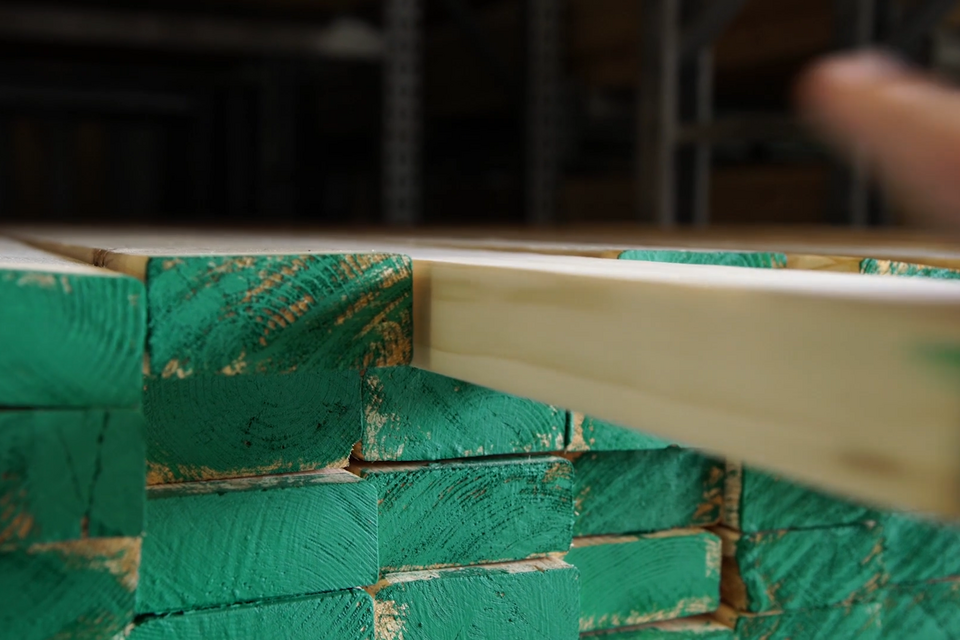The market finally bounced back in early September, but not to the expectations that traders and mills had thought it would. Timing seemed to be the biggest factor for the reversal as Labor Day, the official holiday for vacations to end and normal schedules to return, coincided with the lowest numbers the market has seen since the spring of 2020. With the return of some projects mothballed during the peak, dealers running their inventories down (as they waited for the bottom to hit) and mills trying withhold production in an attempt to reverse the market, it appeared that there was little reason to wait any longer for conditions to change so buyers jumped in. However, they didn’t go whole-hog on buying. After such a horrendous run-up and run-down this year, many have been financially bleeding out on their high-cost and copious lumber inventories and so were being extremely conservative with their replenishment (and, in many cases, doing so at the command of their financial officers). Predictions that the construction sector would surge again this year are still just predictions and, with volatility imbedded in our industry due to labor, material and transportation shortages, the risk of additional corrections are a realistic threat. Nonetheless, the biggest challenge at this time for the lumber market is a lack of trucking. The deficit in drivers and rigs continues to haunt every sector of commerce (contributing to longer and longer lead times) which may spur buyers to buy a little more than they really want or need. For October, we expect to see healthy sales across the board and for pricing to be firm or rise modestly as dealers replenish from distributors and mills.
A wide misconception of the lumber market correction has been that the entire building industry has returned to somewhat normal (in terms of product pricing and availability), which couldn’t be further from the truth. After lumber prices came down, many contractors had their material quotes updated only to discover that the price difference between the old and new quote was negligible. After all, studs and plywood are now selling for a fraction of what they were just a few months ago, so shouldn’t the difference be huge? The difference between the old and new lumber pricing is huge, but so is the difference in pricing for many other things commonly found on these quotes, and not in the direction that any of us want to bear. The sad reality is that, while lumber items had been the focus of price increases as they relate to home-building during their run-up, they generally account for only 15% of the cost of materials on a newly constructed home, a much smaller percentage than most people realize. Shortages abound in all sectors of building materials, be it raw goods (metals, plastics, glass, or wood), labor (there isn’t a single manufacturer that isn’t struggling with obtaining reliable, qualified, or skilled employees) or transportation (drivers, rigs, and containers are in extremely short supply). The inability to produce due to shortages of goods and/or labor is certainly a major sticking point, but when it comes to the transportation of the same, building products are literally spending weeks (and even months) at loading docks, on container ships outside of ports, on railcars or at reloads while they wait their turn for an open driver and rig. In the end, shortages drive up costs and that is what we are experiencing with a myriad of products now, from engineered wood to door knobs. In addition, it should be noted that the key difference between lumber and these other products is that they are specialty items that usually rely upon multiple ingredients in order to produce the final product. If any one of those ingredients become hard to obtain, availability, and pricing will suffer and it doesn’t matter how trivial the missing component may be. For instance, if a major producer of asphalt roofing runs out of bundle wrappers (because they are stuck on a container circling in the Atlantic, waiting for an opening at port), they can’t produce and ship their shingles. The domino effect has huge ramifications, and it’s this kind of scenario that we are commonly dealing with across the board. Although most everyone’s hands are tied when it comes to expediting products that are the fruit of our global economy, we still have options, which should start with finding local alternatives.
However, the best strategy is to communicate with your Shepley sales person often regarding your upcoming needs, discuss realistic lead times and alternatives, and plan well in advance of when you may need the material so that you have the best chance of having it ready for when you need it.
Since the pandemic began, we have tackled the supply chain disruptions daily and head-on, relying upon our extensive and knowledgeable network of resources to help secure our regular products, seek suitable alternatives, or otherwise find creative ways to get the job done. We can assure you that, at no time, have we lost our sense of urgency or our passion to satisfy you, our customer. Rather, we have embraced the chaos of the supply chain and continuously work to exceed your expectations by having the quality products that you need when you need them, at competitive prices. We thank you not only for your business, but for your patience during these trying times.
Our team of experienced sales professionals are a resource to you and here to help every step of the way so your projects run smoothly. If you have questions or feedback about materials and products, please reach out to your Shepley team.
